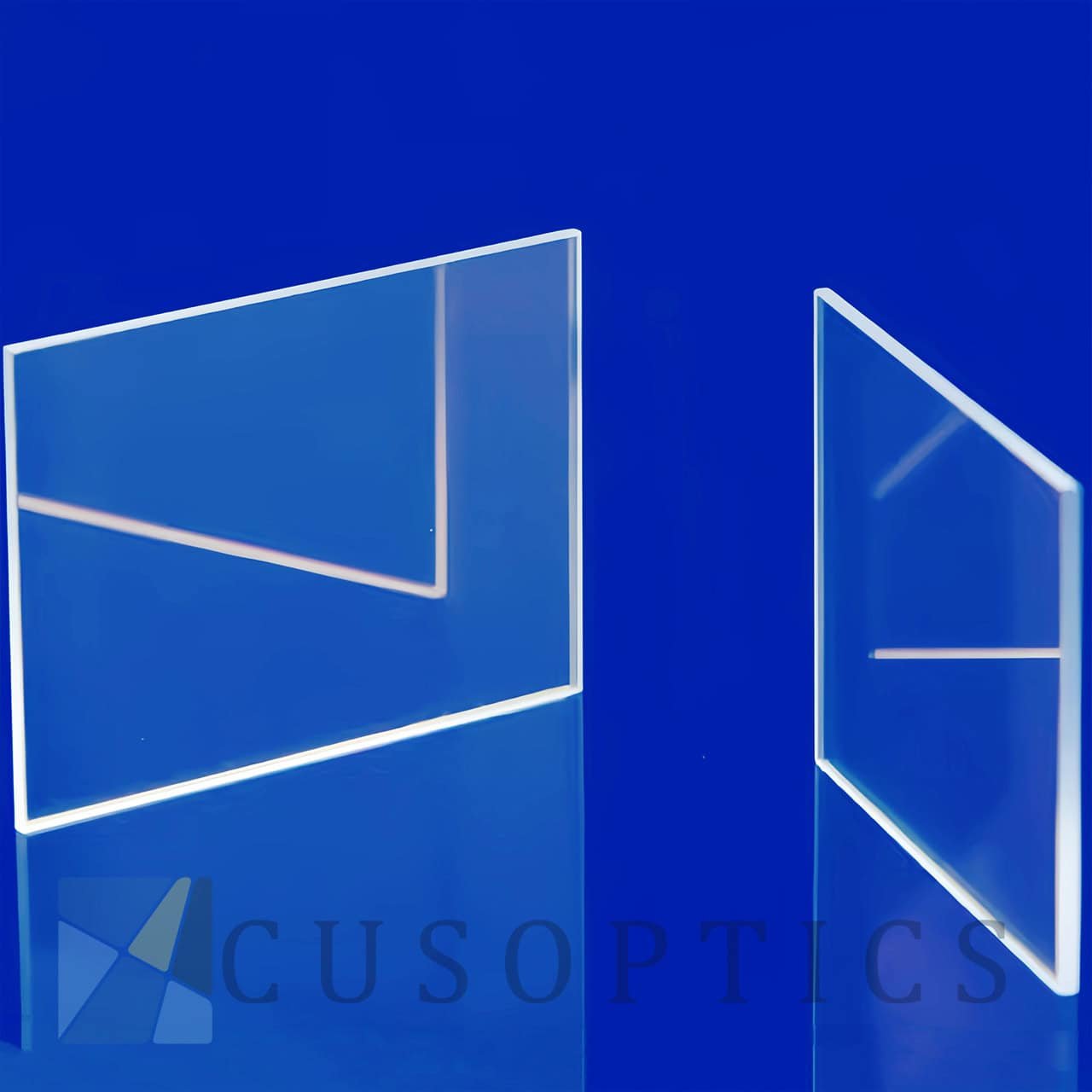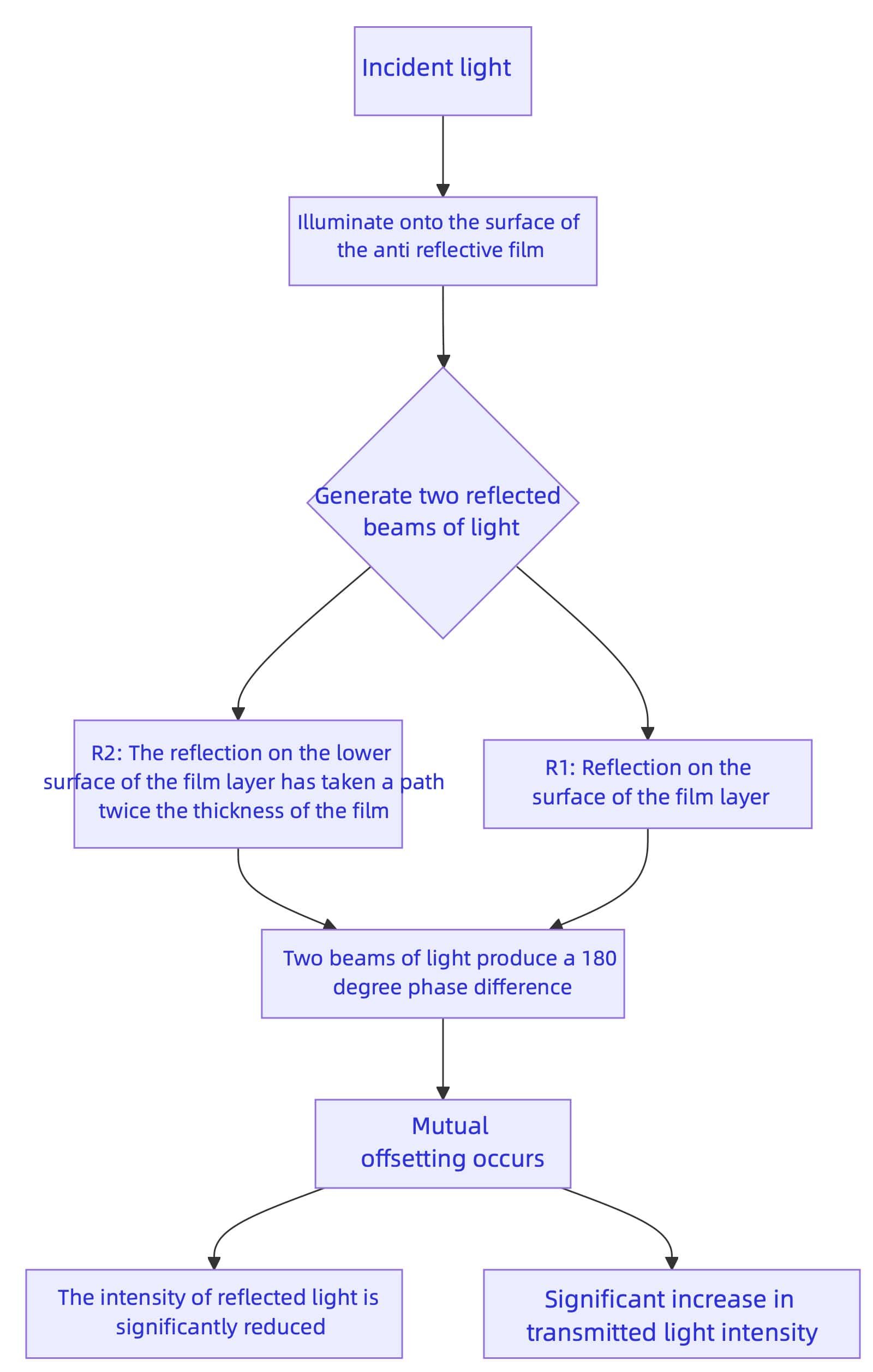Anti-Reflection Coating – AR Coating
Custom Fabrication
Custom Fabrication
Any question you want to know, just to contact email: cusoptics@micquartz.com.
What is AR anti reflective coating?

Anti reflective coating, also known as anti reflective coating, is a functional thin film coated on the surface of optical components such as lenses. Its core purpose is not to “increase transparency”, but to minimize surface reflection of light to achieve efficient transmission of light.
You can imagine it as putting an “invisibility cloak” on the surface of glass, making the presence of glass almost imperceptible to light and allowing it to pass through directly.
Why do we need anti reflective coatings? ——Resolve reflection issues
According to the Fresnel equation in optics, when light enters another medium (such as glass) from one medium (such as air), reflection and refraction occur at the interface.
Uncoated glass: Each surface will reflect approximately 4% of the incident light.
A lens has two surfaces: the total reflection loss is about 8%.
Complex optical systems (such as camera lenses containing more than ten lenses): Reflected light will reflect multiple times between these lenses, forming severe ghosting and flare, greatly reducing image contrast and clarity.
Anti reflective coating films solve all of the above problems by almost eliminating reflections.
How does anti reflective coating work?
The anti reflective film does not absorb reflected light, but utilizes the fluctuation and interference effects of light to make the reflected light “self cancel”. The principle is as follows:
Structure: Coat one or more transparent films with an optical thickness (physical thickness x refractive index) of 1/4 of the target wavelength on a glass substrate.
Two beams of reflected light: The incident light will produce one beam of reflected light on the upper and lower surfaces of the film, respectively.
Phase difference: Due to the optical thickness of the film, the path difference between these two reflected light beams is exactly half a wavelength, resulting in a phase difference of 180 °.
Destructive interference: When two light waves with similar amplitudes and opposite phases meet, they cancel each other out. The reflected light disappears as a result, and the energy is concentrated in the transmitted light.
Types & Features of Anti Reflective Coatings
| Type | Features | Reflected Light Color | Application |
|---|---|---|---|
| Single Layer Anti Reflective Coating | Optimized for a single wavelength (such as 550nm green light), with a simple structure and low cost. | Deep purple or blue | Laser components, low-cost optical components |
| Broadband Anti Reflective Coating (BBAR) | Using multiple layers of dielectric film (up to dozens of layers), it maintains extremely low reflectivity throughout the visible light spectrum (400-680nm). | Very light green or dark red | Camera lenses, telescopes, microscopes (mainly application) |
| Ultra Wideband Anti Reflective Coating | Extend the anti reflection band to the ultraviolet (UV) or infrared (IR) region. | Depends on the design band | Special lasers, medical equipment, aerospace sensors |
The advantages of Anti-reflective Coating
Improving transmittance: By reducing the single-sided reflectance from 4% to below 0.2%, the total transmittance of complex lenses can be increased from 50% to over 90%.
Improve image quality: completely eliminate ghosting and glare, significantly enhance image contrast and clarity.
Increase color saturation: reduce stray light, making color reproduction more realistic and vivid.
Improving system efficiency: For energy sensitive systems such as projectors and laser systems, reducing light energy loss is to improve efficiency.
Application
Consumer electronics: smartphone cameras, AR/VR headset lenses, sports cameras.
Imaging equipment: DSLR/mirrorless camera lenses, camera lenses, telescopes, microscopes.
Instrument and equipment: spectrometer, laser, medical endoscope, barcode scanner.
Display technology: High end TV screens, museum artwork protective glass, reduce ambient light reflection.
Energy and transportation: solar panel cover (to increase lighting), car dashboard cover.
Send Us A Message


